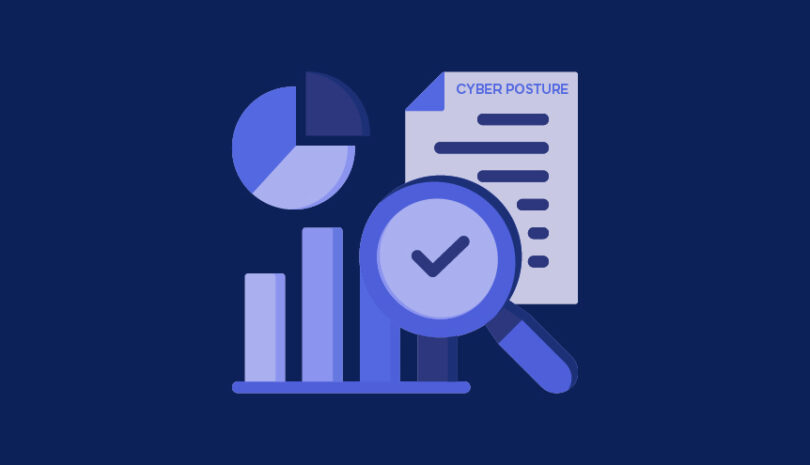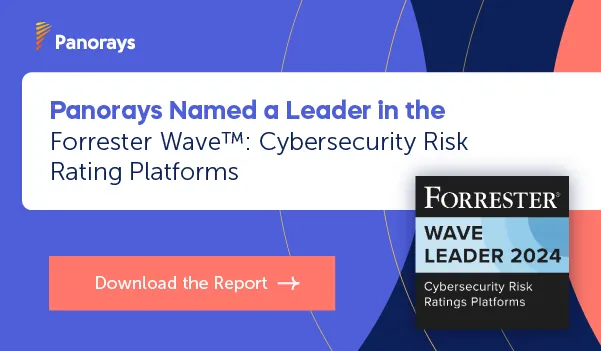A recent survey revealed that more than 70% of CISOs found factors such as the ability to assess risk based on third-party criticality and report on the business influence of third-party management are important factors in selecting a third-party risk management solution.
What if your organization had a method for tracking its third-party dependencies and adjusting your business priorities to them in real time? What if instead of a one-dimensional risk score you could receive a continuous, personalized cybersecurity assessment of each one of your third parties, prioritized according to criticality? Risk DNA is a new measurement that takes all of these parameters into account when assessing third-party risk.
What is Risk DNA?
Risk DNA is the most personalized and comprehensive risk assessment rating of each of your third-parties. Unlike other cyber risk rating scores, however, it takes into account the dynamic business relationship your organization has with each of its third parties. In other words, it defines the business impact and level of criticality based on factors such as your third parties’ access to sensitive data, physical facilities, departments involved and level of criticality of the services provided.
Let’s take the example of when Infosys McCamish suffered a data breach, significantly impacted BOA, resulting in the exposure of personally identifiable information (PII) of 57,028 customers. In this case, Infosys McCamish is a third party that has access to BOA’s sensitive and confidential customer data. Not all third parties pose such a high level of business risk to your organization, however. The level of risk can also evolve throughout the business relationship as it becomes less or more critical – and Risk DNA takes this into account as well.
Risk DNA also takes into account all third-party breach history and generates AI-driven predictions for future data breaches. It does this in addition to conducting both internal and external assessment of your third parties as well as determining each supplier’s individual risk appetite. All of these elements work together to deliver the most accurate cyber risk rating of your third parties on the market today.
A Real-Time Cyber Risk Rating You Can Trust
Many third-party risk platforms operate under the assumption that third party relationships are static. That means that when they calculate risk ratings, they don’t take into account the dynamic nature of risks, the different levels of critical services a third party delivers to an organization, or the evolving nature of their risk appetite and internal cybersecurity policies. This results in an inaccurate cyber risk rating that organizations cannot fully trust. With an accurate risk rating that is continuously updated to take these factors into consideration, however, organizations can ensure they have optimal defense against current and future threats in the cybersecurity landscape.
How is Risk DNA Calculated?
Risk DNA is calculated through various sources, including external and internal assessments, the business criticality of each supplier or third party and a combination of your organization’s unique risk appetite and internal risk policies.
Here are the different components used to calculate Risk DNA:
- Your Organization’s KPIs and KRIs. Risk appetite, business priorities, and compliance and regulations are given significant weight when measuring your Risk DNA.
- External risk assessments. The security posture of third parties analyzed by their external assets in order to discover vulnerabilities and remediate gaps in security.
- Internal risk assessments. After determining the business impact and criticality of each third party, internal assessments are conducted to assess the compliance of each supplier. Ensuring validity of responses is achieved with AI tools that cross-reference answers from third-party vendor documentation, certifications and similar answers from past questionnaires.
- Real-time threat intelligence. Third parties’ data breach history, alongside AI-based risk prediction, provides insights and real-time alerts concerning new vulnerabilities and breaches within the third-party external attack surface. This approach considers the evolving relationship you maintain with your third-party partners.
You can learn more about Risk DNA and how it is calculated here.
How Panorays Helps Manage Third Party Risk
Panorays delivers contextual third-party risk management to allow CISOs and security professionals to focus their efforts on what matters, gain the approval of internal stakeholders and boardroom members and receive actionable alerts with the next steps for them to take so that your organization can achieve optimal security posture with each of its third parties.
The different platform elements include:
- Supply Chain Discovery and Mapping. Continuously discover unknown third to n-th parties, ranking them in order of criticality to your business. Get real-time alerts when these business relationships change or as notification of emerging threats.
- Risk DNA Assessment. Calculate a real-time cyber rating based on a combination of external and internal assessments, third party risk profiling, and each third parties’ internal policies and risk appetite. It also factors in past and current data breaches as well as an AI-driven prediction of future ones.
- Continuous Threat Detection. Prioritize vulnerabilities based on your KPIs and KRIs. Receive alerts of data breaches and security incidents based on the level of critical services that each supplier delivers.
- Remediation and Collaboration. Close security gaps quickly with a customized plan for each supplier, prioritized to address the most critical issues first.
Want to learn more about Risk DNA and its role in third-party risk management? Get a demo today!
FAQs
-
A cybersecurity posture is the overall strength of a supplier to defend against cyber threats. This includes conducting regular internal and external risk assessments, adherence to a cybersecurity risk framework, facilitating a general awareness and culture of cybersecurity and the proactive identification of threats.
-
Risk appetite is the amount of risk an organization is willing to take to achieve its business goals. It varies according to the specific action taken and the type of risk involved. For example, an organization might accept a certain amount of financial risk to open a new product line to gain a competitive edge.
-
You can determine the level of criticality of a supplier by mapping all of your third parties and understanding the necessity of the service they deliver, the access it has to sensitive data and physical facilities, the departments involved, and other factors clarifying the context of the business relationship.
-
Cybersecurity posture rating is determined through a combination of external and internal risk assessments and evaluation of a supplier’s adherence to security controls, including identification of vulnerabilities in its external attack surface.






